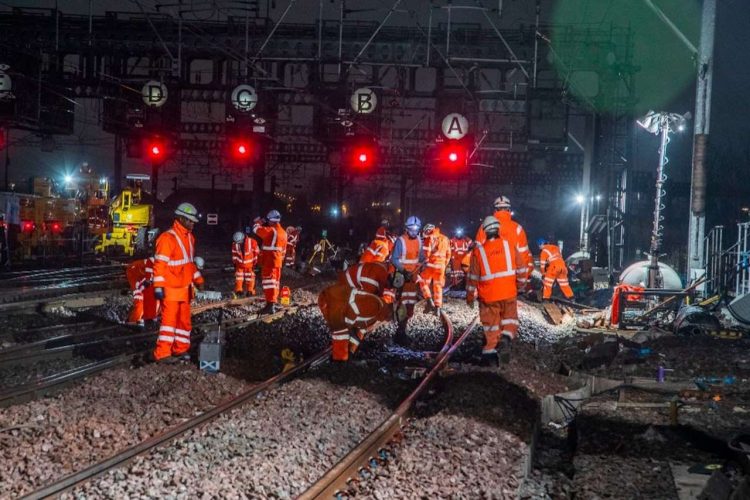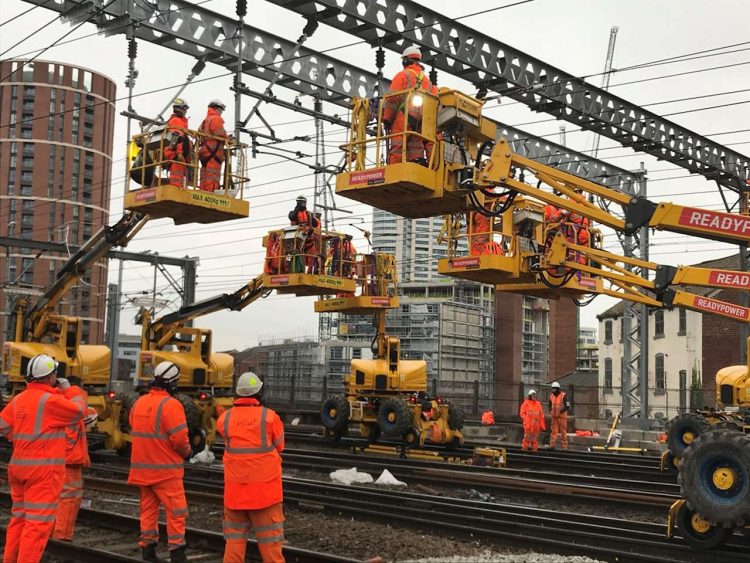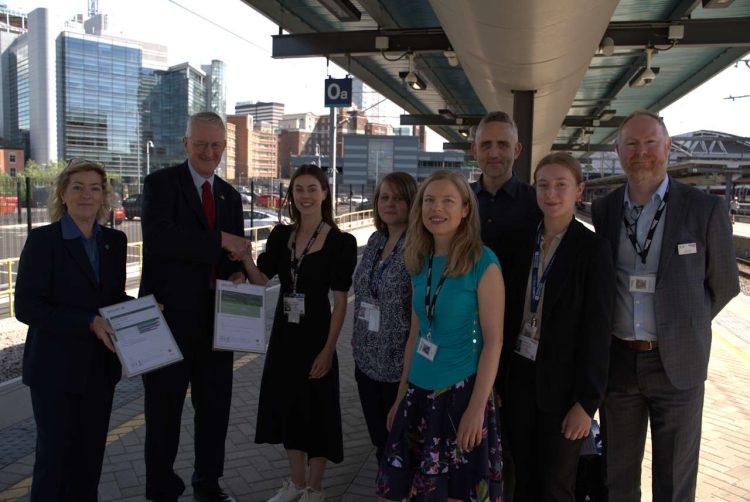Leeds station capacity improvements have achieved an ‘excellent’ rating under the Building Research Establishment Environmental Assessment Methodology (BREEAM).
Local MP Hilary Benn present the award to the Transpennine Route Upgrade team, which carried out the work, on the recently-built platform 0 behalf of the BRE Group.
BREEAM was formerly known as CEEQUAL, and is a recognised environmental and sustainability assessment method. It awards ratings to civil engineering, infrastructure, landscaping and public realm projects.

In May, the Transpennine Route Upgrade released its plans to significantly reduced carbon emissions, generate thousands of jobs and deliver social value to the North of England.
The programme’s sustainability strategy, ‘Our Guiding Compass’, outlines how the Upgrade, which is the largest rail infrastructure project in the North, will save six million tonnes of carbon dioxide emission over the six decades after the work is complete.
Design and construction teams at Leeds station reduced materials and waste, which resulted in a saving of more than 144 tonnes of carbon dioxide emissions. They built components, including overhead line equipment, away from the station, minimising the impact on station users and local residents. They also achieved efficiencies by upgrading some of the track at Category 4 instead of Category 2, reducing the quantity of materials used and changing two overhead line equipment (OLE)portals to Twin Track Cantilevers (TTCs) and removing four OLE structures.

The work to increase Leeds station’s capacity has included:
- building the new platform 0, which opened in 2020, providing more capacity for more frequent, longer trains
- installing a modern signalling system to
- upgrading signal interlocking from a legacy solid-state interlocking to a new, computer-based interlocking
- reconstruction of platform 1
- changes to platforms 2, 3, 4 and 5
- remodelling track and overhead electrical lines on the approaches to platforms 0-3 to allow parallel working
- remodelling track and overhead electrical lines into platform 4-6 to increase operational flexibility and accommodate services from Leeds North West into platforms 4 and 5
As part of the assessment, the project achieved a score of 98% for engagement with communities and stakeholders, which included: social initiatives centred around Science, Technology, Engineering and Maths (STEM) and charitable volunteering. Examples include:
- working with year 8 and 9 students at Leeds City Academy in the Engineering Development Trust Go4Set programme
- donating the Victorian canopy columns to Bolton Heritage Railway
- collecting donations at the station for St. George’s Crypt, a charity that works with homeless and vulnerable people

Hilary Benn (pictured, second from left), MP for Leeds Central, said: “The awarding of excellent in BREEAM infrastructure for the work at Leeds station is testament to all the staff involved and to the sustainable ethos of the Transpennine Route Upgrade.
“Rail travel is vital to the people of Leeds and this recognition shows how sustainability is being built into the future of rail travel across the North of England.”
Neil Holm, Managing Director of Transpennine Route Upgrade said: “Sustainability is at the heart of the Transpennine Route Upgrade and the recognition from BRE Global for our work at Leeds Station pays tribute to our ambitions.”
“Leeds is a key station on the Transpennine Route Upgrade and to deliver this vital work while making major carbon savings, engaging the community and creating jobs sets a blueprint for the rest of our programme.”





Responses
Platform 0 is a very odd platform. Same at other stations that have platform 0.